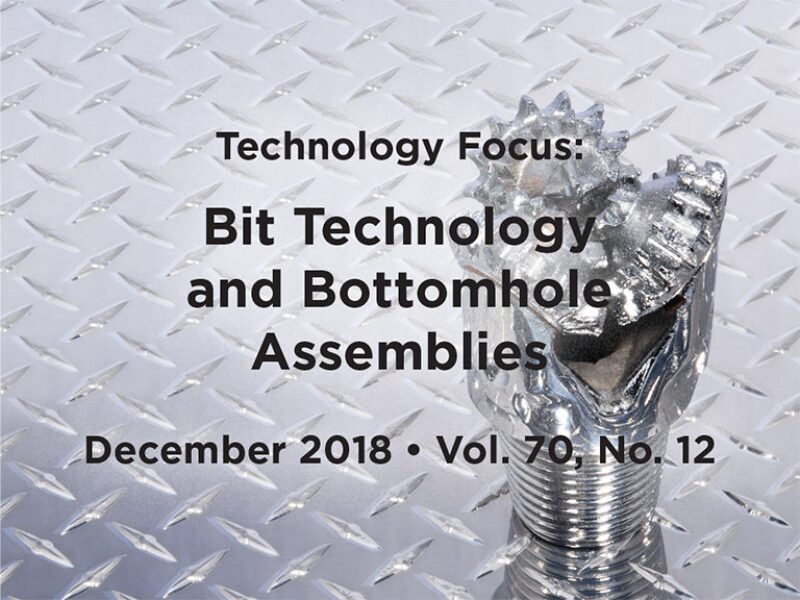Rock characterization, with regard to determination of mechanical and geologic properties, is critical for performance drilling. This consideration ensures appropriate offsets analysis. Additionally, it promotes several benefits in project planning and execution, with regard to bottomhole-assembly (BHA) design and compliance analysis, drive-system evaluations, bit selections, hydraulics considerations, drilling-parameter ranges, and anticipation of operational dysfunctions. Performance drilling, when deployed holistically, contributes to cycle-time and project-cost reductions.
In most instances, hardness is considered to be the most critical rock property in bit-selection discussions. Field performances, and results from this classification, have not been consistent with this claim. Recent research shows that, in addition to hardness, other rock properties, such as lithology types, heterogeneity, and abrasiveness, have equal importance in bit evaluations. Consequently, the discussion must move from rock-strength analysis to rock-drillability analysis, which is more inclusive.
BHAs must achieve their expected functional roles without creating vibrations or conditions that compromise project success. Vibration events commonly have been tied to BHAs or drill bits. Efforts aimed at addressing vibration challenges through bit and BHA changes have not produced the desired results. Researchers have identified additional influences (e.g., drilling parameters, drilling fluid types, rock-drillability factors, stabilizer types and geometries, reamers, wellbore trajectory, and drive systems) that also serve as vibration sources. Consequently, strategies or solutions aimed at addressing vibration challenges must target their sources to ensure effectiveness of such solutions.
Performance consistency, aided by effective bit-wear predictions, promotes cycle-time reduction. Improvements in rock-drillability analysis, bit selection, BHA design, drilling-parameter selections, and vibration remediation, coupled with the industry’s advancements in downhole-tool development and data analytics, must ensure appropriate monitoring and prediction of bit wear. Research must delve into the different bit-failure modes—wear and impact, different wear stages, and the totality of factors that drive the wear process.
This Month's Technical Papers
Rock-Strength Analysis and Integrated FEA Modeling Optimize Bit Selection
Improved Methods Aid Understanding and Mitigation of Stick/Slip Torsional Vibrations
Real-Time Data Analytics Allows for Bit-Wear Monitoring and Prediction
Recommended Additional Reading
IADC/SPE 189697 Real-Time Downhole Data Resolve Lithology-Related Drilling Behavior by Christopher Viens, Nabors Drilling Solutions, et al.
SPE 187445 Real-Time Bit-Wear Prediction Using Adaptive Data Analytics by Vikrant Lakhanpal, University of Houston, et al.
SPE 188427 Experimental Investigation of the Effects of Rotational Speed and Weight on Bit on Drillstring Vibration, Torque, and Rate of Penetration by Vimlesh A. Bavadiya, University of Oklahoma, et al.

| Graham Mensa-Wilmot, SPE, is a senior adviser for drilling engineering at Chevron Energy Technology Company. He is the MAXDRILL (performance drilling) project leader and has more than 30 years of experience in drilling-applications research, downhole-tool development, drilling mechanics, drilling-vibration identification and remediation, and performance-drilling improvement. He holds an MS degree in drilling engineering from Romania’s Petroleum-Gas University of Ploiesti. Mensa-Wilmot has authored several technical papers and holds several patents. He serves on the SPE/IADC Drilling Conference Program Committee and the SPE Drilling and Completions Committee. Mensa-Wilmot served as an SPE Distinguished Lecturer in 2016–2017 and previously served as a drilling-dynamics and performance-drilling instructor for the Petroleum Network Educational Courses series. He serves on the technical board of the SPE Gulf Coast Section and is a member of the JPT Editorial Committee. Mensa-Wilmot can be reached at gmensawilmot@chevron.com. |


